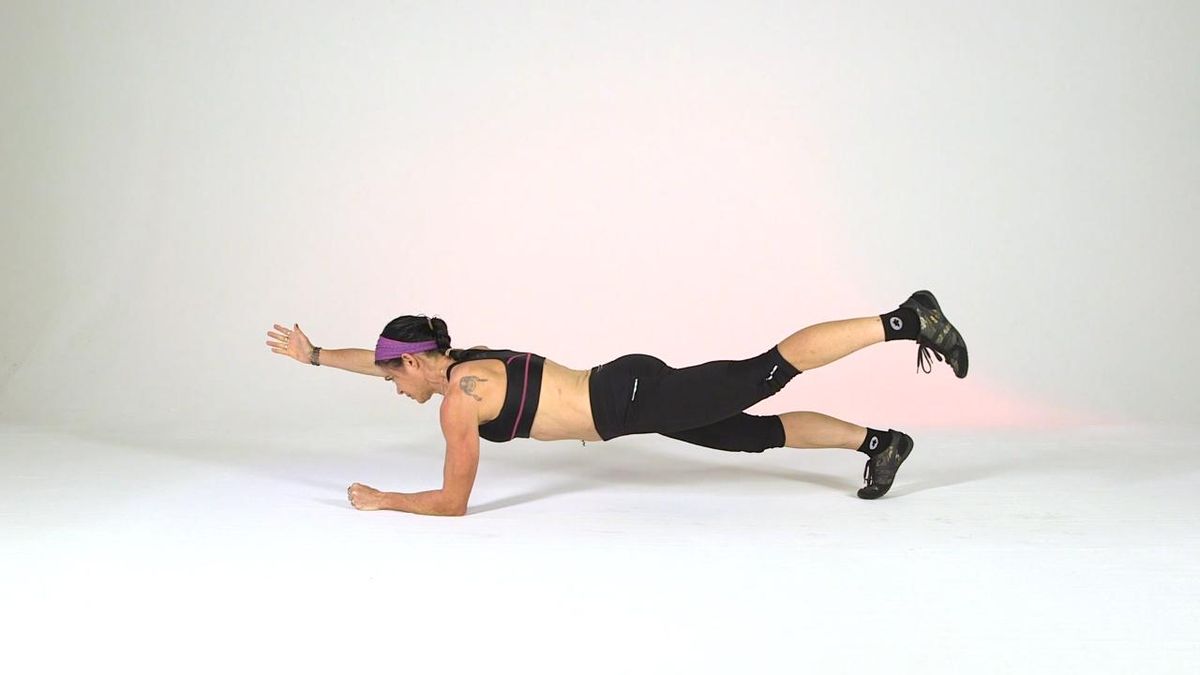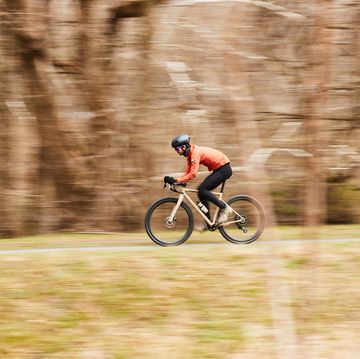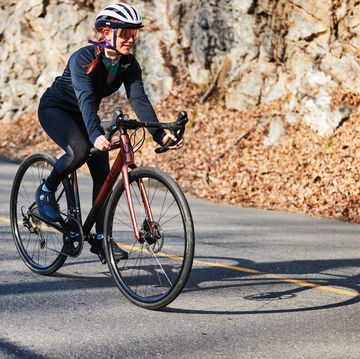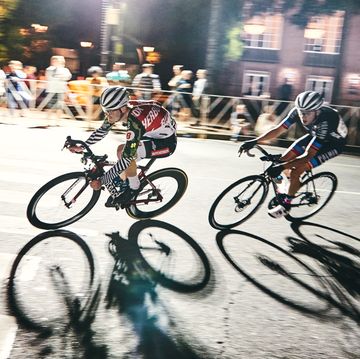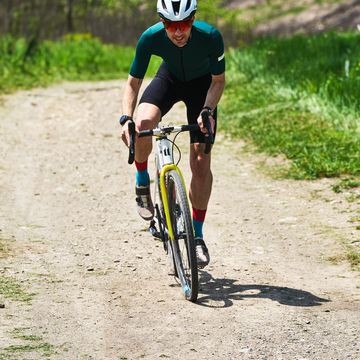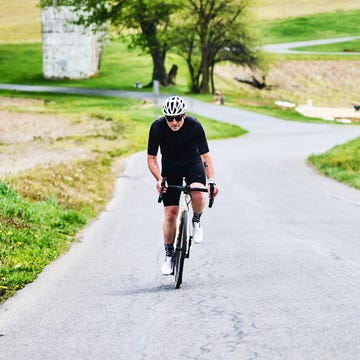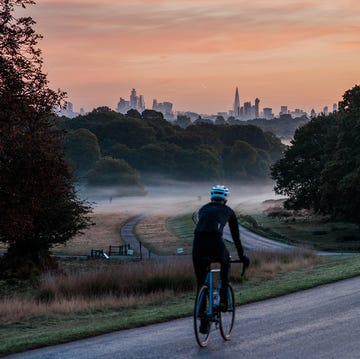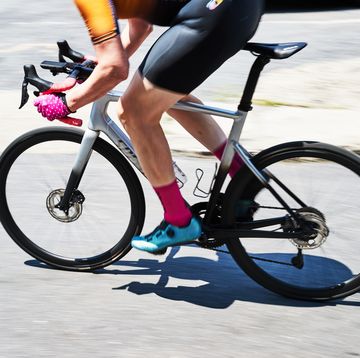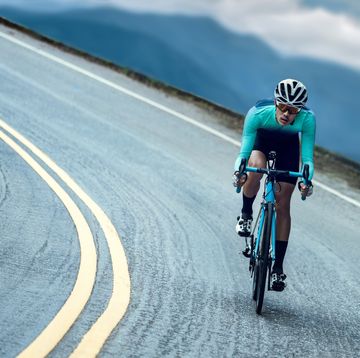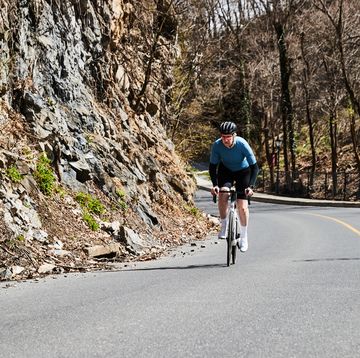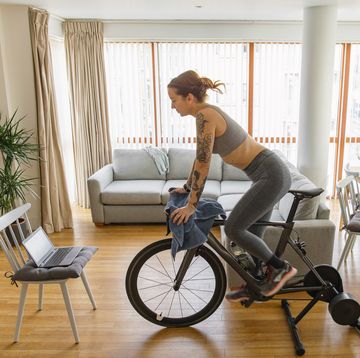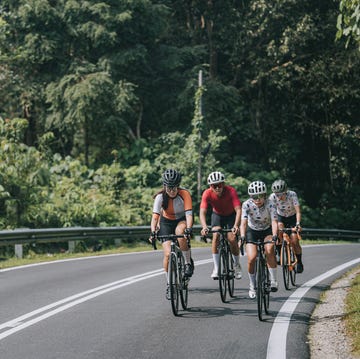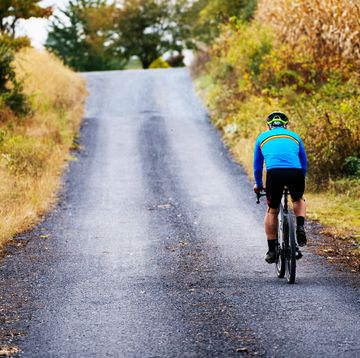Back in my early 20s, as a cyclist and runner, it always seemed to me like completing an Ironman was the Holy Grail of the triathlon world. You just couldn't mention that you raced tris without hearing the dreaded question: "Have you done an Ironman??" So, caving to pressure, I did one. And when I limped across the finish line, I vowed never to swim-run-bike 140.6 again.
But a year ago, my bike racing started to feel stale. What had once been a steady stream of year-round competition slowed to a race or two a year, and I needed something to snap me out of my funk. So I made a decision based on an insane, esoteric need to feel like "an athlete" again: I signed up for Ironman Canada. After all, if anything will shake some motivation and life into your cycling, it's an endurance event that demands specific, serious training. (Want to get serious about your own cycling? The tips in our book, Maximum Overload, will help you increase your performance and build strength all over!)
For those of you smart enough to steer clear of such events, the breakdown of an Ironman is as follows: a 2.4-mile swim, 112-mile bike, and 26.2-mile run. My race, in a nutshell, went quite well—but I'm not here to write a race report. (Let's be honest, most of it would just read, "Are we there yet?") What follows are my tips for Ironman beginners or just the Ironman-curious. The good news is about half of your race time in an Ironman is spent on the bike, so if you're already a cyclist, you're at a major advantage—and on your way to "140.6"-bumper-sticker status already.
You Don't Need a Fancy Bike...
First off, it's not about the bike. Seriously, you don't need a snazzy triathlon bike to do well in one of these races. I passed a lot of Cervelo P3s and aero helmets on my road bike, a Trek Emonda I'd equipped with aero bars. I wore a regular helmet and normal jersey. Could I shave off a few minutes with fancy gear? Probably. But the best bang-for-your-buck when it comes to Ironman racing isn't necessarily buying the fastest bike. In my experience, your best spends come from a good bike fit, a coach, a training plan, and anything that will get you in better overall shape for the event.
For better performance across all events, having a strong core is key:
...But You Do Need Quality Running Shoes
Then again, there is one gear item you're not going to want to skimp on, and that's quality shoes. Guilty confession: I raced in my two-year-old mountain bike shoes and year-old running shoes, and I now have the black toenails and pained arches I deserve.
If you spend money anywhere, make it on your feet. And do it sooner rather than later. A month ago, I realized my running shoes were pretty beat up, but it was too late to order new ones to break in with enough time before the race. Never race in new equipment.
RELATED: What's Causing My Arch Pain?
Opt for a Proper Chamois
Consider skipping the tri-suit. Changing into a proper chamois after your swim takes an extra 30 seconds, but it’s so, so worth it. (People who don't are bonkers. Also soggy.) From a saddle sore-avoidance standpoint, this swap will make you infinitely happier in the long run, and it will ultimately cost you less than a minute of time.
RELATED: 10 Bike Shorts and Bibs So Good, You Might Not Want to Take Them Off
Pace Yourself
Pace yourself on the cycling leg. It’s tempting to go HAM on the bike because it’s what we do as cyclists, but I have to warn you: There’s a whole lot of running left when you come in from those 112 miles.
Peeing Shouldn't Be a Problem
Don't stress about peeing on the bike. I remember reading horror stories about trying to pee while riding, getting peed on while riding, and even having something worse than pee come out while peeing when riding. But the peeing on the bike thing is sort of a myth—most people don't really end up needing to pee while they're riding unless they're going slow, in which case, they can stop at the port-a-potty at aid stations.
RELATED: How do Tour de France Riders Pee?
Use Kilometers
One weird trick to make the distance go by faster: Measure in kilometers—not miles—on your Garmin. It’s weirdly more satisfying to tick away 180 kilometers than it is 112 miles (maybe because you hit 100 earlier!). It's also nice during the run leg as 42 whittles down to 40, then 39, and so on.
Know the Course
Check the course profile well ahead of time. In my case, 2,000 meters of climbing was a lot. So I planned ahead and did plenty of climbing in the months beforehand, so the race didn't come as such a shock. It's not just because it's tiring: Climbing uses different muscles than pummeling along on the flats, so knowing how those muscles feel when tired is a huge help. Especially when you still have to run 26.2 miles.
RELATED: This Guy Crushed Ironman Texas on a Fat Bike
Clean up Afterward
Wash, don't wallow. Post-race, I was lying on the bathroom floor for 30 minutes trying to avoid throwing up. (It didn’t work.) But once I got in the shower and really cleaned up, I felt a million times better. There's just something about washing your hair and face after you're been subjected to lake water, sunscreen, sweat, Gatorade, more sweat, more sunscreen, ice, warm water, and a mid-run Pepsi. You're a mess! Being clean will make you feel like a new human and set you on the road to a quicker recovery.
Miss Your Other Passions
Perhaps most importantly, racing an Ironman helped me realize that it's time I took a break from my aero bars and got back to my true love—my mountain bike. The group trail rides that I've had to skip for road rides and solo runs this summer have been a great reminder that I actually really love to shred singletrack. So that's where you'll find me next.
You Are an Ironman
But for those of you hungry to claim that finisher's medal, take solace in the fact that the fitness you're going to build while training for this event is going to last you for months afterwards. The best part of the race might not be the race day. If you're anything like me, the best part will be the training—and the fact that you're now capable of walking out of your house, hopping on your bike, and busting out a century like it's nothing. You didn't just do an Ironman, you are an Ironman.

